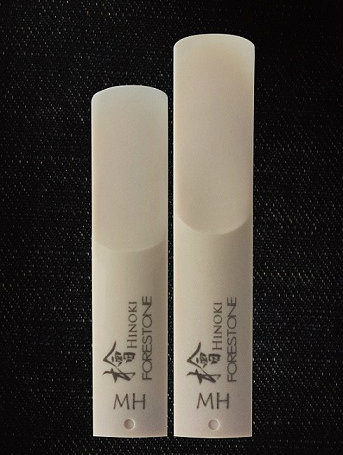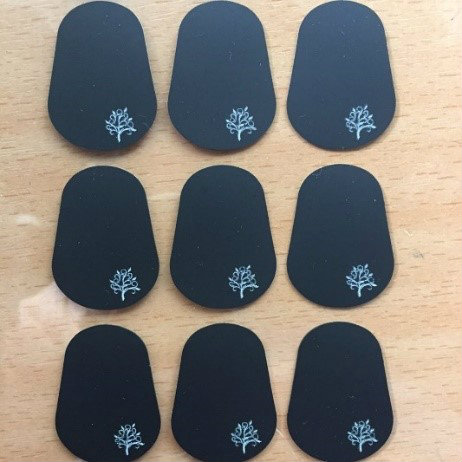Forestone’s Newest Products to hit the market
Forestone’s Hinoki Reeds and Mouthpiece Patches
Introduction
Forestone continues to research, develop, and improve upon their existing product line. Recently, Forestone introduced a new synthetic reed called “Hinoki”. The Forestone “Hinoki”reed is a jazz cut hybrid that unlike the black bamboo model, comes in an ivory color that more resembles traditional cane. Forestone was nice enough to send me a Medium and Medium Hard strength for both alto and tenor to play test. In addition to reviewing the “Hinoki” reed, I will also be reviewing Forestone’s saxophone mouthpiece patches.
Forestone’s Hinoki Reed

Product Overview
According to Forestone, this reed has an even richer tonal color and response compared to their traditional series. Similar to the traditional, un-filed, and black bamboo series, the Forestone Hinoki reeds are durable and unaffected by the influences of temperature, humidity and dehydration.
Overall Thoughts
I have tried the Forestone traditional, un-filed, and black bamboo reeds in the hopes of finding a cut and strength that I prefer over traditional cane reeds. The Hinoki reed compared to the other three cuts, I found to play more similar to a traditional jazz cut cane reed. I do believe that a MediumSoft or Soft would had better suited me compared to the Medium which I felt was a bit resistant and the Medium Hard which was simply too hard from what I am used to playing. I found that the overall sound was full through-out the entire range of horn. From my experience, I found the upper register and lower register to have the same sonic characteristics as traditional cane but I still find the mid-range is missing some of the tonal colors compared to traditional cane. I do believe the Hinoki reed is a move in the right direction and an improvement from the other cuts. I still believe that synthetic reeds have not surpassed traditional cane sonically as well as feel but other players beg to differ. I understand that many players use and enjoy synthetic reeds and I do see the benefits as well as will use synthetic reeds to practice. I will continue to search for a synthetic reed that I enjoy playing on as much as cane and the Hinoki is on my list to continue to play test and try different reed strengths. My recommendation is when trying a synthetic reed, you have to play on it for a couple of days to get used to it so be patient.
Forestone Saxophone Mouthpiece Patches

Product Overview
One of the newest accessories that Forestone has added to its product line is their saxophone mouthpiece patches. Forestone saxophone mouthpiece patches are self-adhesive with no glue residues after usage. These mouthpiece patches use a different type of material that is easy to remove and has a more natural feel than rubber.
Overall Thoughts
I believe it’s important to use a mouthpiece patch on every mouthpiece to avoid teeth marks which will help increase the longevity of your mouthpiece and help avoid future repairs. I have used the Vandoren, Runyon, and D’Addario mouthpiece patches. I find the Forestone mouthpiece patch is very similar to these other mouthpiece patches. The Forestone mouthpiece patch is easy to remove and can be transferred to another mouthpiece easily.
Conclusion
After having tried Forestone’s various reeds, saxophones, and accessories, I can confidently say that the new Hinoki reed and saxophone mouthpiece patches are another great addition to the Forestone line of products. The Forestone team is constantly working to not just introduce new products but also work to revamp existing products to make them even better. I highly recommend checking out Forestone’s line of products and please let me know what you think.
Company Website
YouTube Video
http://www.youtube.com/watch?v=GrEGJw1jt8s





